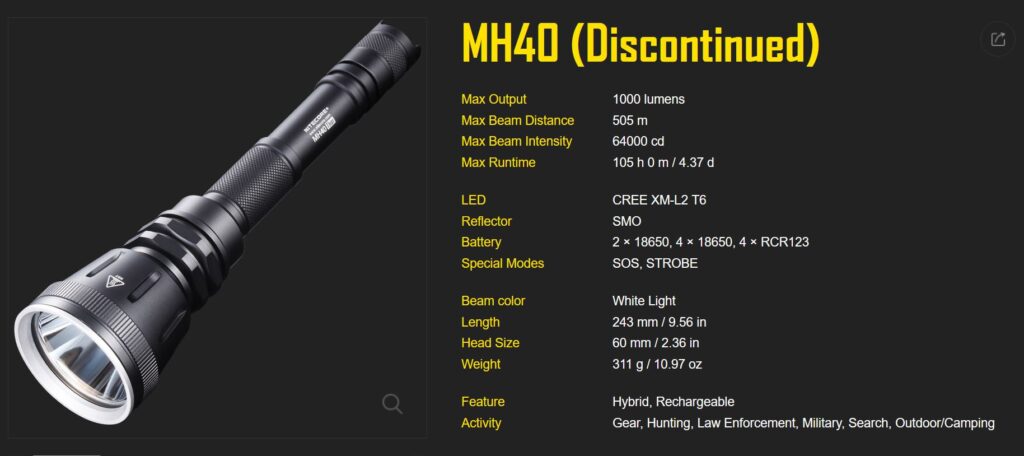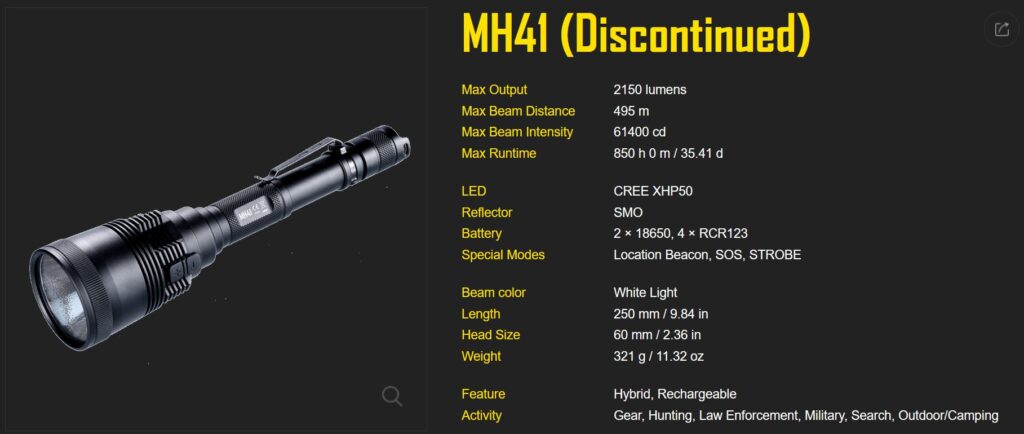I personally love to explore the wilderness at night. Netra, she is not so keen, but that’s perfectly OK, as I can still walk around for hours looking for things to see and photograph. I’ll go through a few basic items I use for photographing at night. These give me the opportunity to capture most things that cross my path.
As a minimum, I would suggest a torch, a flash for your camera, and a diffuser. At the end of the blog post, I’ll note the list of equipment I use again and where I have purchased them.
Torches are what allow me to see in the dark. I normally carry three torches, two powerful main lights (one as a back-up) and a smaller head torch for when I am doing little things like changing lenses, batteries, or camera bodies or even photographing something that does not need a lot of light for illumination. Needless to say, you don’t need all these torches, but I often walk deep into the wilderness all alone and I need redundancy to let there be light. And, after decades of doing this stuff, I can pretty much change most bits of equipment around in total darkness.
My main torches are both Nitecore Multitask Hybrid series tactical torches. I purchased my first Nitecore back in 2010, the MH35, I think it was. It failed within a year or so, and I got a brand new MH40 as replacement. In 2020, I bought its successor (now also discontinued) the MH41. They both came with holsters I could thread my belt through making them easy to stow while walking, or when I need them kept safely. I’ll put photos I have taken from the Nitecore website at the very bottom with specs for each model in the below picture.
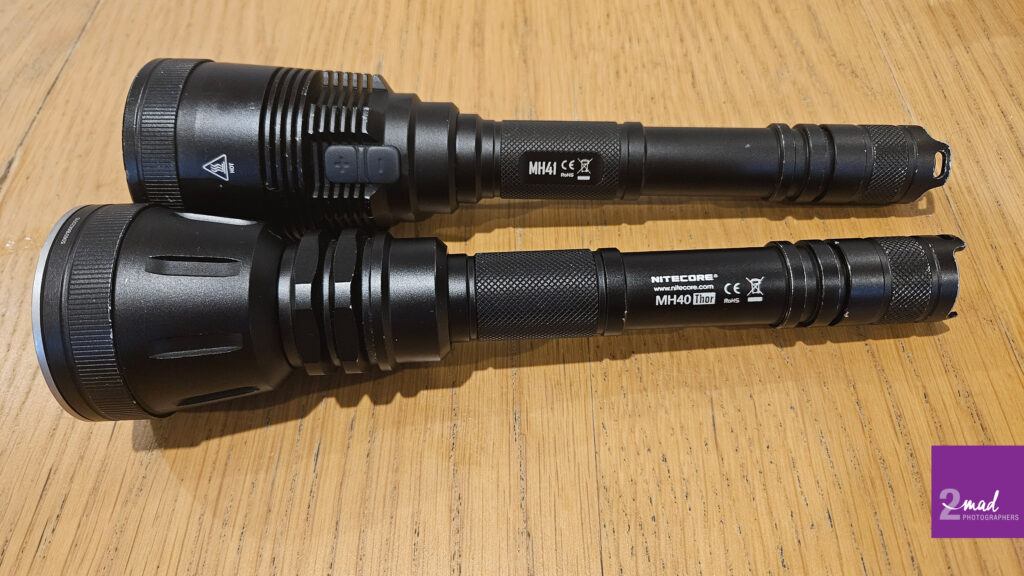
Both are incredibly good torches for spotlighting in general with adjustable power so you can preserve batteries. They take 18650 size batteries, which I recharge in a separate charging unit that takes four batteries. If you have not heard of that size, here is a photo comparing one to a regular AA battery. I have options to plug an adaptor into the car cigarette lighter socket to charge the torches while I drive, but I prefer to have spare batteries handy while out at night, not rely on driving between sites to recharge. I generally take a second set of batteries for each torch.
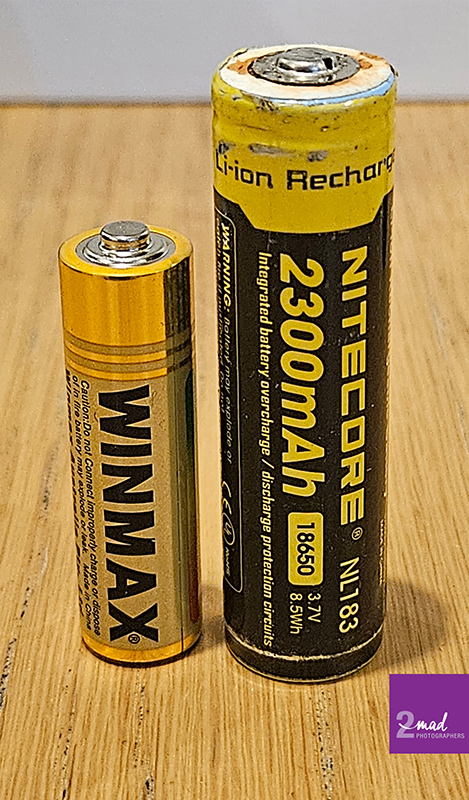
With power consumption of torches, one thing to check is how quickly they drain the batteries if you use them at full power. As long as you have enough spare batteries to get you through a few hours of spotlighting, you will be fine. Let’s say your torch has a maximum power of 1,800 lumens, but it can only last 45 minutes (for example the Nitecore MH25S) at that setting, you may think it is no good. On the contrary, it’s perfect. I tend to use the most powerful settings on my torches sparingly, as they assist me in focusing of more distant subjects, that’s it. For scanning the terrain for critters, I will use the second or third most powerful beam in which case the first set of batteries will be more than sufficient.
My head torch was a Fenix HM65R until I managed to lose it on a night outing in Kenthurst. Sadly, I was never able to recover it to this date. I just went out and bought a cheap no-name brand from Amazon that just does the job. Though, you do get what you pay for. There is no direct on/off switch so I have to cycle through five different light settings to turn the torch off. It’s a little bit of a pain, but still works regardless and does what I need. Albeit, it’s not as nice to even look at as the Fenix.
UPDATE: I have bought a replacement Fenix HM65R from The Lite Shop earlier this year, because I didn’t like the cheap Amazon bought junk in the end. You get what you pay for. For the last 14 years I have been buying all my torches from the Lite Shop here. And no, I am not affiliated with them. I just like the range and service they offer.

When it comes to brands, I have heard the following brands all make good torches: Led Lenser, Olight, Fenix, Wolf Eyes and Nitecore are all good.
Cameras, lenses and flashguns are the other items you need. Camera choices are pretty straight forward mostly, whereas lenses can be a personal choice. I tend to often shoot macro now at night, so I will take my M.Zuiko 60mm f/2.8 macro lens for the job. This lens is incredibly sharp and useful. You can take your favourite macro lens for photographing the small critters at night. Another option is to use a longer lens for nocturnal birds or mammals. A zoom lens or prime lens with teleconverters usually does the trick. Flashguns are important, because at night, flash is what gives you the light to expose the subject for you.
You can use a flash on its own, or buy a better beamer flash extender to get more reach from your flash when photographing more distant subjects, like owls, possums or other larger animals. The Better Beamer Flash Extender is made for specific flashes due to the shapes and sizes of the flash heads. Unfortunately, there are none made for Olympus or Godox flashes. I had two BBs left over from my Canon user days, so I slightly modified them to fit the new flash heads.
Another thing for close-up, or macro, photography is a diffuser. My Olympus STF-8 twin macro light comes with diffusers, but I still prefer a single overhead flash with a Cygnustech diffuser to soften my light. A diffuser literally cuts the harsh flash effect from your images when using flash as the main source of light.
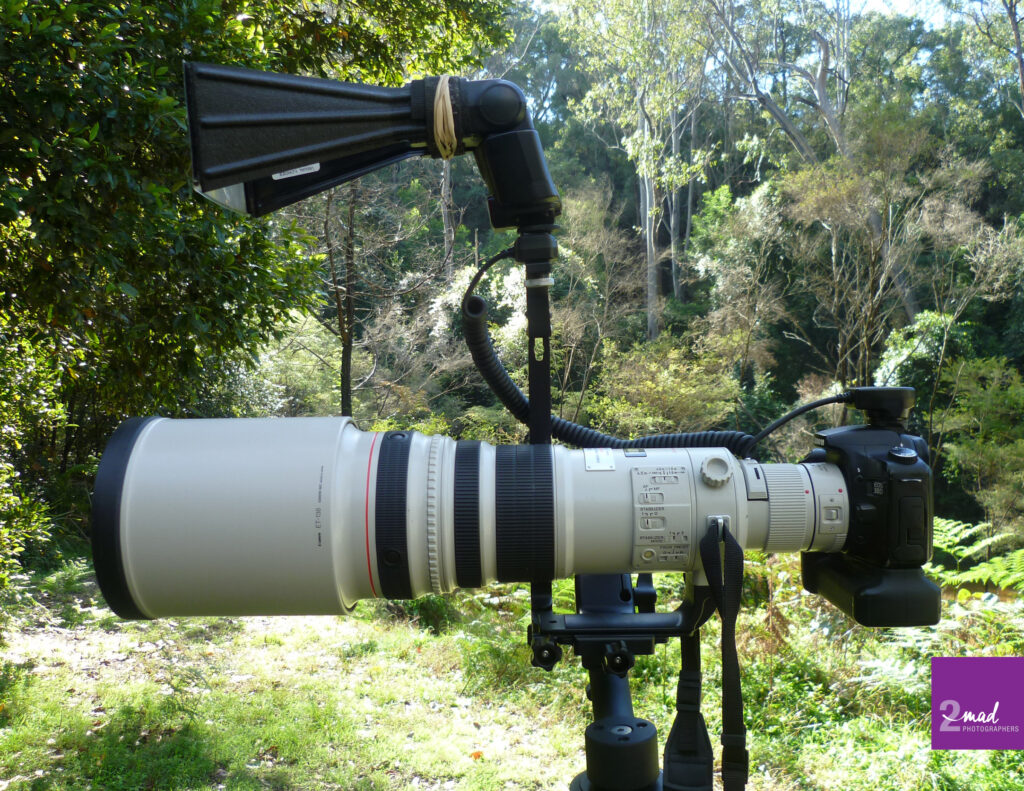
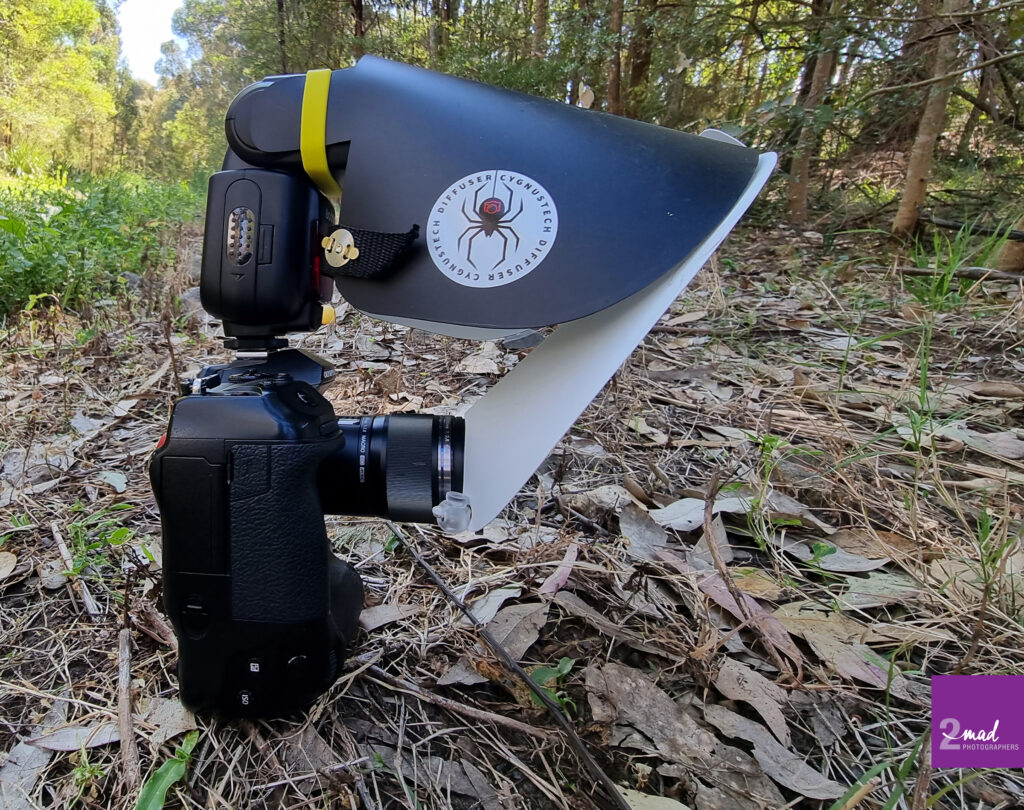
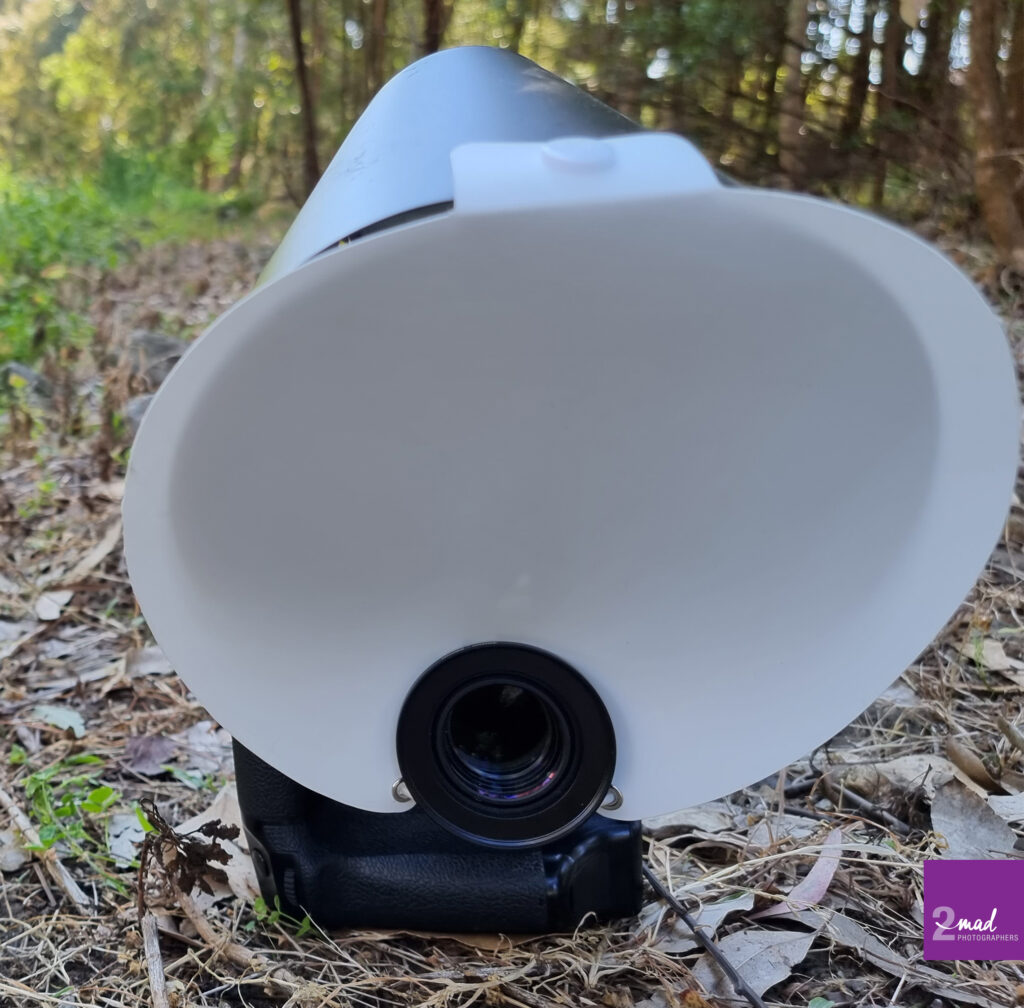
I am attaching a few different images below to show what can be achieved with either a Beamer or a Diffuser (macro). Both have their use in my kit.

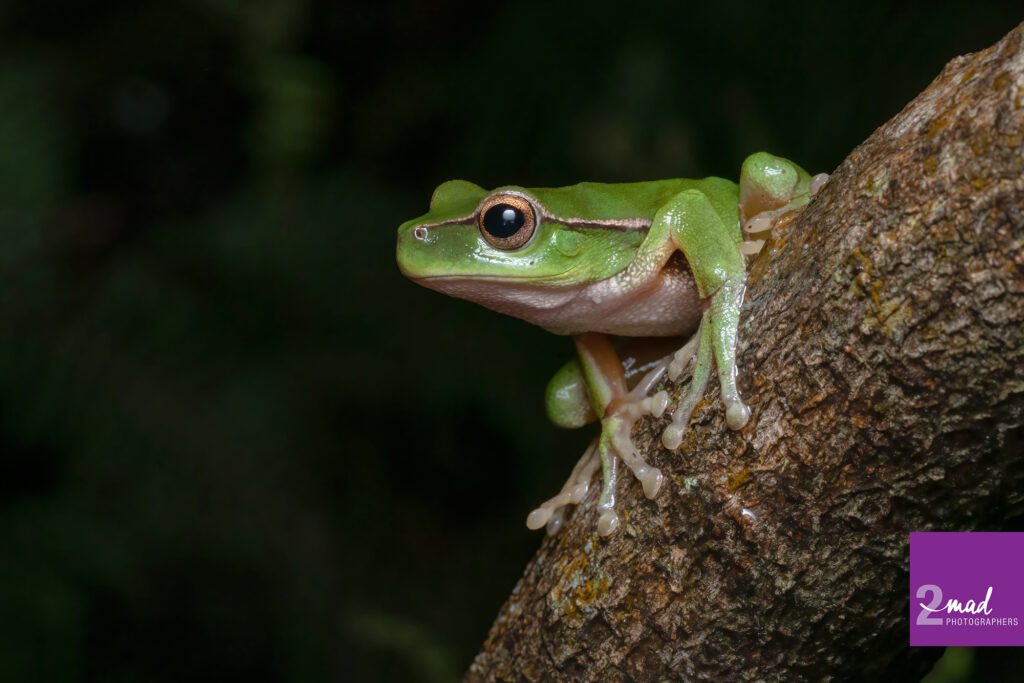

I hope the few above examples gave you a taste of what is possible with having the right equipment to engage in nocturnal photography. I will list my most critical items below with links to where I have bought them before. Of course, you can find a different source if you wish to do so. Just click on each item to go to the seller website.
Godox flashes I use the TT685O models (2 of them)
Cygnustech Diffuser – press the top button to purchase, Brendan responds fastest to Instagram messages.
You can see the specs of my currently used Nitecore torches.
